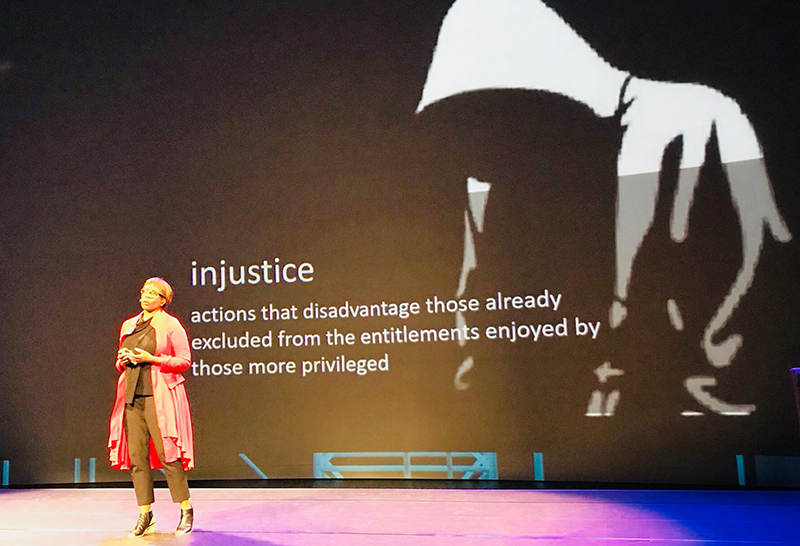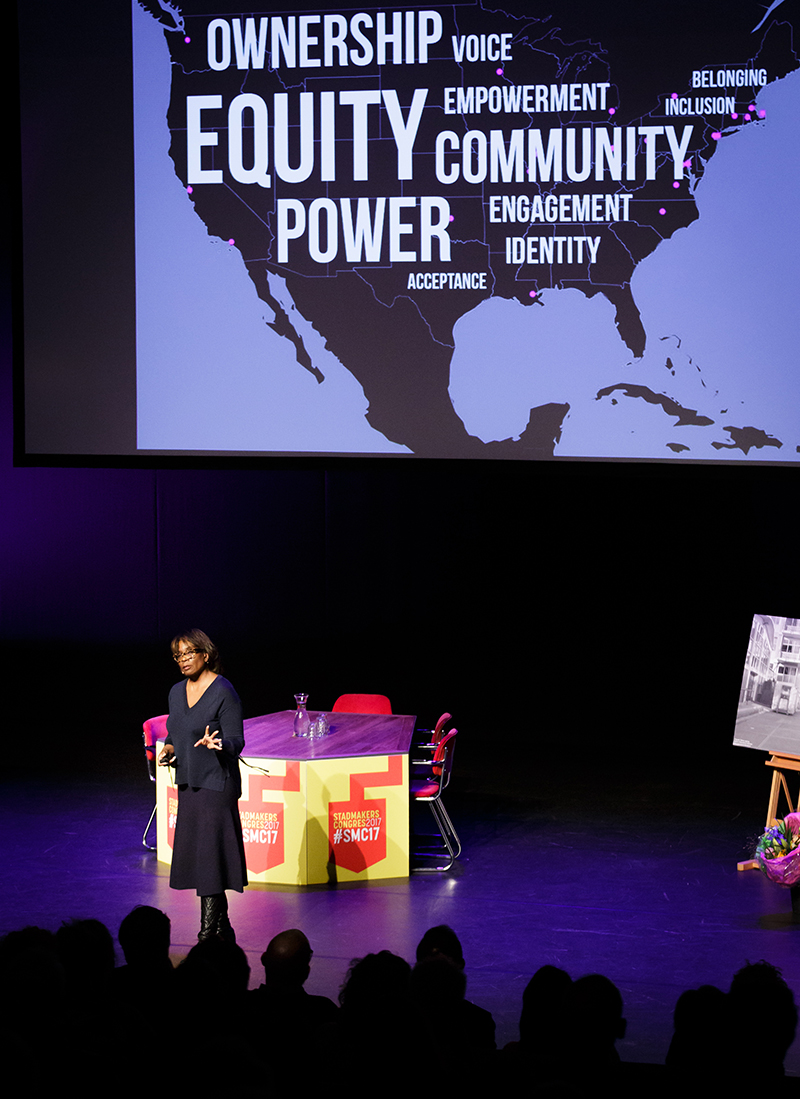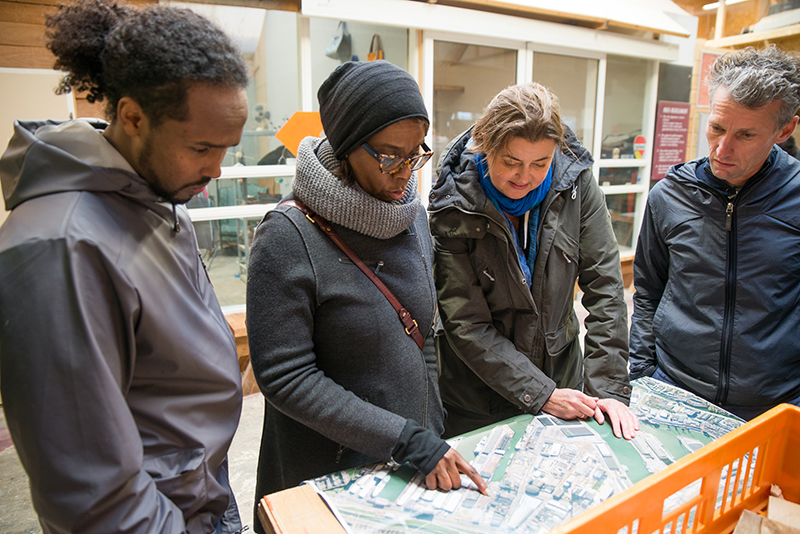
Image courtesy Toni L. Griffin.
This interview is part of an ongoing Design Observer series, Chain Letters, in which we ask leading design minds a few burning questions—and so do their peers, for a year-long conversation about the state of the industry.
This November, we‘re looking at design and democracy through a different lens: service design, and how it functions within government systems to serve us better.
Toni L. Griffin is a Professor in Practice of Urban Planning at the Harvard University Graduate School of Design, founder of Design for the Just City, and founder of Urban Planning for the American City. Through the practice, Toni served as Project Director for the long range planning initiative of the Detroit Work Project, and in 2013 completed and released Detroit Future City, a comprehensive citywide framework plan for urban transformation. Most recent clients include working with the cities of Memphis, Milwaukee and Pittsburgh.
Toni has held several public sector positions including, Director of Community Development for Newark, New Jersey; Vice President and Director of Design for the Anacostia Waterfront Corporation in Washington, DC; and Deputy Director for Revitalization and Neighborhood Planning for the DC Office of Planning. She began her career as an architect with Skidmore, Owings & Merrill LLP in Chicago, where she became an Associate Partner.

Griffin on stage at the Rotterdam AIR 2017 Conference. Image courtesy Toni L. Griffin.
What are a few key factors you consider when asked to take on a project by a government entity and in determining whether or not your work will have lasting success?
My practice works primarily in U.S. cities with long histories of urban renewal and disinvestment that have created marginalized neighborhoods and social networks. Today, cities are looking to reverse these trends and become more inclusive, equitable, and just. So when I’m considering a public sector client that is looking to dismantle these conditions, I advise them that this process will require not only government, but also active participation from private, nonprofit, institutional, community development, and philanthropic sectors.
I strongly believe—and have seen firsthand—how shared ownership in creating a vision plan inspires greater collective action and makes the implementation of a project more effective. Multi-sector participation in city-making and neighborhood revitalization can establish greater accountability among all sectors, including government, but it also provides the additional human capital, research, and financial resources that governments need to be effective.
I strongly believe—and have seen firsthand—how shared ownership in creating a vision plan inspires greater collective action.
How do you identify opportunities for improvement in a designed system that appears broken?
Look to civic participation. When governments view engagement as only a means to disseminate information one-way, rather than as a tool to build relationships and alliances, the values communities seek in terms of greater access, accountability, inclusion, and trust can never be fully met.
In my practice and design research lab, The Just City Lab, we design tools that help governments and non-government community members build trust, enthusiasm, and inclusion through civic engagement. We want to create a deeper understanding of public processes, and build community partnerships that have more sustainable outcomes. When communities (geographic or issue-based) have a greater say in the decisions that affect their future, they begin to see themselves as collaborators rather than obstructionists.
When communities have a greater say in the decisions that affect their future, they begin to see themselves as collaborators rather than obstructionists.
Does poor information design disproportionately affect some user groups over others, and what are the implications of that relationship?
When I engage groups representing diverse interests and points of view in my urban planning work, there can be distrust, so information supported by data has become increasingly important. I’m often viewed as an outsider, and therefore, must establish my credibility through the manner in which I present credible and legible information.
For example, Detroit Future City, a long-range, strategic, citywide planning framework, relied on the correct representation of technical and anecdotal data to different audiences: experts and non-experts. You have to be able to communicate your work in different ways to meet the needs of different user groups. Our team utilized creative ways to represent the assets and challenges of the city, using everything from highly designed, data-driven, infographics to “day-in- the-life” cartoon narratives, which represented how policies and design ideas would work on the ground.

Griffin on stage at the We Make the City Conference. Image courtesy Toni L. Griffin.
What do government services look like at their best?
At their best, government services are responsive and transparent. During my tenure as Deputy Planning Director of Washington D.C. under Mayor Anthony A. Williams, from 2000 to 2006, government service was radically transformed simply by changing the culture of customer service. Any phone call had to be returned within 24 hours and mechanisms for transparent accountability, like citywide neighborhood engagement around participatory budgeting, were implemented. Of course significant operational changes were required too, but raising the level of reliable customer service helped to re-establish confidence in city government as it emerged from a federal control board.
My work is rooted in change: change that is happening, change that is needed, or change that is being prevented.
From Chelsea Mauldin: What aspects of just urban design practice end up generating the most resistance from residents—or political leaders? How do you address conflict in your work?
My work is rooted in change: change that is happening, change that is needed, or change that is being prevented. I would say the most contentious discussions with city residents happen when either change is unexpected or when it threatens to do harm. The first can be corrected, in part, through the creation of transparent forms of communication between residents and their government. But this requires an engaged community that willing to participate in civic life as individuals and with their neighbors.
Managing the second form of change is far more challenging because “harm” can take many forms; for instance, the harm caused by displacement as compared to harm caused by altering the comforts of the status quo. I learned early in my career from the president of Justice & Sustainability, LLC, that consensus is not about everyone agreeing to the same thing but rather, leaving the table their needs addressed. In the work I do to address city and neighborhood change, the “need” is never one thing. Therefore, effective use of urban planning and civic engagement as a tool to identify those needs can often result in more shared interests among community members than anyone originally realized.

Griffin at the Rotterdam AIR 2017 Conference. Image courtesy Toni L. Griffin.
Next week Toni asks Dana Chisnell, adjunct professor of public policy at Harvard and co-director at the Center for Civic Design: Many communities of color, both Americans and foreign-born, obtain information and build trust through personal relationships rather than digital ones. At a time when accusations of voter suppression are prevalent, how does your work take into account the way different communities learn, communicate, and build trust? How have you seen your work break down barriers of distrust and instill greater inclusion and participation?

